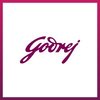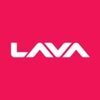
i
Voltas
Filter interviews by
Voltas Assistant Manager Interview Questions and Answers
10 Interview questions
To convert a plus chiller to a minus chiller package, the refrigeration system needs to be modified to accommodate the change in temperature requirements.
Modify the refrigeration system to allow for lower temperatures
Adjust the settings and controls to operate at negative temperatures
Install additional insulation to maintain lower temperatures
Replace any components that are not rated for sub-zero temperatures
Chiller selection is based on various parameters such as cooling capacity, efficiency, size, noise level, and cost.
Cooling capacity: Determine the required cooling capacity based on the size of the space and heat load.
Efficiency: Look for energy-efficient models to reduce operating costs.
Size: Consider the physical dimensions of the chiller to ensure it fits in the designated space.
Noise level: Choose a chiller wi...
Designing ODU VRF with AHU involves selecting compatible units, determining capacity requirements, and ensuring proper installation.
Select compatible ODU VRF and AHU units based on capacity and efficiency requirements
Calculate the total cooling and heating load of the space to determine the capacity needed
Design the refrigerant piping and electrical connections between the ODU VRF and AHU
Ensure proper ventilation ...
Pump HP is calculated using the formula: HP = (Q x H) / (3960 x Efficiency)
HP = Horsepower of the pump
Q = Flow rate of the pump in gallons per minute (GPM)
H = Total head in feet
Efficiency = Efficiency of the pump as a decimal
What people are saying about Voltas






The MaX COP of VRF systems is typically higher than that of chillers.
VRF systems generally have a higher COP (Coefficient of Performance) compared to chillers.
VRF systems can achieve COP values of 4 or higher, while chillers typically have COP values around 2 to 3.
The higher COP of VRF systems makes them more energy efficient and cost-effective in the long run.
PIBCV valves are typically installed on the supply side of the chilled water system.
PIBCV valves are installed on the supply side to control the flow of chilled water into the system.
They are often located near the chillers or air handling units.
PIBCV valves help regulate the temperature of the chilled water circulating in the system.
These valves are crucial for maintaining the efficiency and performance of the ch...
Refnets are calculated based on the number of referrals made by an individual.
Refnets are typically calculated by counting the number of referrals made by an individual.
The formula for calculating refnets may vary depending on the specific program or system being used.
Refnets can be used to track the effectiveness of referral programs and the performance of individuals in generating referrals.
Suction head is the vertical distance between the pump impeller and the surface of the liquid being pumped.
Suction head is important in determining the efficiency of a pump.
It is crucial for ensuring that the pump does not cavitate, which can damage the pump.
Examples of suction head include static suction head and dynamic suction head.
IK/TR stands for Installment Key/Total Receivables and NPLV stands for Net Present Loan Value.
IK/TR is a financial metric used to calculate the ratio of total installment payments to total receivables.
NPLV is a financial metric used to determine the net present value of a loan.
IK/TR is important for assessing the repayment capacity of borrowers, while NPLV helps in evaluating the profitability of loans.
Example: If...
The inlet and outlet temperatures for both the evaporator and condenser depend on the ambient conditions prescribed by ISHRAE.
Inlet and outlet temperatures for the evaporator and condenser will vary based on the ambient conditions specified by ISHRAE standards.
For air-cooled systems, the inlet temperature for the evaporator is typically higher than the outlet temperature, while the opposite is true for the condens...
Voltas Assistant Manager Interview Experiences
8 interviews found
I appeared for an interview in Apr 2025, where I was asked the following questions.
- Q1. 1. What is the Pipe laying process? 2. Pumps alignment? 3. Budgeting 4. Costing 5. Vendor Management 6. Planning 7. Scheduling 8. Smooth Execution Strategy 9. Client Management 10. Management
- Ans.
The process involves planning, executing, and managing various aspects of pipe laying and project management.
1. Pipe Laying Process: Involves site preparation, trenching, pipe installation, backfilling, and testing for integrity.
2. Pumps Alignment: Ensures pumps are correctly aligned to prevent wear and tear; use laser alignment tools for precision.
3. Budgeting: Create a detailed budget considering materials, labor, an...
- Q2. 1. Pumps Installation Process 2. MS, DI, HDPE, GI, UPVC, PVC, SS, Laying and Fabrication process
Interview Preparation Tips
I appeared for an interview in Aug 2024.
(3 Questions)
- Q1. Overall Company roles and responsibilities
- Ans.
The overall company roles and responsibilities involve defining job duties, setting expectations, and ensuring accountability.
Defining job duties for each position within the company
Setting clear expectations for employees
Ensuring accountability for tasks and projects
Providing necessary training and resources for employees to succeed
Evaluating performance and providing feedback
Promoting a positive work culture and team...
- Q2. Sap process
- Q3. Codes and manpower handling
(2 Questions)
- Q1. Inventory process
- Q2. Kaizon and 5s
Interview Preparation Tips
I applied via AngelList and was interviewed in Jan 2024. There were 2 interview rounds.
(3 Questions)
- Q1. Privous company roll and responsible
- Q2. Welding knowledge
- Q3. Brazing knowledge
(2 Questions)
- Q1. Vapour compressor cycles
- Q2. Star to delta connection ✨️

(6 Questions)
- Q1. Too much technical about RAC
- Ans. Latent heat, sensible heat, heat load calculation
- Q2. How to convert a plus chiller to minus chiller package
- Ans.
To convert a plus chiller to a minus chiller package, the refrigeration system needs to be modified to accommodate the change in temperature requirements.
Modify the refrigeration system to allow for lower temperatures
Adjust the settings and controls to operate at negative temperatures
Install additional insulation to maintain lower temperatures
Replace any components that are not rated for sub-zero temperatures
- Q3. Few technicalities which can help you answer on HVAC segment
- Ans. How to design & built a project using Autocad2D
- Q4. Difference between inverter and fixed speed
- Ans.
Inverter changes speed based on load, while fixed speed operates at a constant speed.
Inverter adjusts motor speed to match the required load, saving energy and reducing wear and tear.
Fixed speed motors operate at a constant speed regardless of the load, leading to higher energy consumption.
Inverter technology is commonly used in air conditioners and refrigerators for energy efficiency.
Fixed speed motors are often found...
- Q5. How is pumps HP calculated
- Ans.
Pump HP is calculated using the formula: HP = (Q x H) / (3960 x Efficiency)
HP = Horsepower of the pump
Q = Flow rate of the pump in gallons per minute (GPM)
H = Total head in feet
Efficiency = Efficiency of the pump as a decimal
- Q6. What is suction head
- Ans.
Suction head is the vertical distance between the pump impeller and the surface of the liquid being pumped.
Suction head is important in determining the efficiency of a pump.
It is crucial for ensuring that the pump does not cavitate, which can damage the pump.
Examples of suction head include static suction head and dynamic suction head.
(8 Questions)
- Q1. Chiller selection based on which parameters
- Ans.
Chiller selection is based on various parameters such as cooling capacity, efficiency, size, noise level, and cost.
Cooling capacity: Determine the required cooling capacity based on the size of the space and heat load.
Efficiency: Look for energy-efficient models to reduce operating costs.
Size: Consider the physical dimensions of the chiller to ensure it fits in the designated space.
Noise level: Choose a chiller with lo...
- Q2. Inlet & outlet temp for both evap & Cond If aircooled ambient prescription in ISHRAE
- Ans.
The inlet and outlet temperatures for both the evaporator and condenser depend on the ambient conditions prescribed by ISHRAE.
Inlet and outlet temperatures for the evaporator and condenser will vary based on the ambient conditions specified by ISHRAE standards.
For air-cooled systems, the inlet temperature for the evaporator is typically higher than the outlet temperature, while the opposite is true for the condenser.
IS...
- Q3. VRF : what is diversity, how it helps to gain more bookings
- Q4. How to design ODU VRF with AHU
- Ans.
Designing ODU VRF with AHU involves selecting compatible units, determining capacity requirements, and ensuring proper installation.
Select compatible ODU VRF and AHU units based on capacity and efficiency requirements
Calculate the total cooling and heating load of the space to determine the capacity needed
Design the refrigerant piping and electrical connections between the ODU VRF and AHU
Ensure proper ventilation and a...
- Q5. How refnets are calculated
- Ans.
Refnets are calculated based on the number of referrals made by an individual.
Refnets are typically calculated by counting the number of referrals made by an individual.
The formula for calculating refnets may vary depending on the specific program or system being used.
Refnets can be used to track the effectiveness of referral programs and the performance of individuals in generating referrals.
- Q6. In chilled water syatem where is PIBCV valves are installed
- Ans.
PIBCV valves are typically installed on the supply side of the chilled water system.
PIBCV valves are installed on the supply side to control the flow of chilled water into the system.
They are often located near the chillers or air handling units.
PIBCV valves help regulate the temperature of the chilled water circulating in the system.
These valves are crucial for maintaining the efficiency and performance of the chilled...
- Q7. What is IK/TR & What is NPLV
- Ans.
IK/TR stands for Installment Key/Total Receivables and NPLV stands for Net Present Loan Value.
IK/TR is a financial metric used to calculate the ratio of total installment payments to total receivables.
NPLV is a financial metric used to determine the net present value of a loan.
IK/TR is important for assessing the repayment capacity of borrowers, while NPLV helps in evaluating the profitability of loans.
Example: If a bo...
- Q8. What is MaX COP of VRF vs Chillers
- Ans.
The MaX COP of VRF systems is typically higher than that of chillers.
VRF systems generally have a higher COP (Coefficient of Performance) compared to chillers.
VRF systems can achieve COP values of 4 or higher, while chillers typically have COP values around 2 to 3.
The higher COP of VRF systems makes them more energy efficient and cost-effective in the long run.
Interview Preparation Tips

(1 Question)
- Q1. Depends on profile R & D or design
(1 Question)
- Q1. Depends on profile r & D or design
Interview Preparation Tips
I applied via LinkedIn and was interviewed in Jan 2022. There were 2 interview rounds.
(6 Questions)
- Q1. Grouting theary , pracally explanation
- Ans.
Grouting is the process of filling gaps or spaces between tiles or masonry with a cement-based material.
Grouting helps to create a uniform and stable surface.
It prevents water from seeping through gaps and causing damage.
Grouting can be done with different types of materials such as cement, epoxy, or urethane.
The process involves mixing the grout material with water to form a paste, applying it to the gaps, and then wi...
- Q2. Previous work experience
- Q3. Responsibilitys and dutys
- Q4. Conical wall shuttering
- Q5. Minimum reinforcement
- Q6. Design mix and concrete planning
(2 Questions)
- Q1. Salary discussion and notice period
- Q2. Site location & accommodation
Interview Preparation Tips
- Wtp, intakes, pump house & Esr

(1 Question)
- Q1. Technical questions related to your job
Interview Preparation Tips
(1 Question)
- Q1. Technical all questions and family background
Interview Preparation Tips
Interview questions from similar companies

I applied via Naukri.com and was interviewed in May 2019. There were 3 interview rounds.
Interview Questionnaire
1 Question
- Q1. Questions were asked on Lean, six sigma, process capability, QC, kaizens etc.
Interview Preparation Tips

I applied via Campus Placement and was interviewed before Mar 2021. There were 5 interview rounds.

(3 Questions)
- Q1. What are your strengths and weaknesses?
- Q2. Tell me about yourself.
- Q3. What is your family background?
- Ans.
My family background is diverse and has shaped me into a well-rounded individual.
My parents come from different cultural backgrounds, which has exposed me to different traditions and perspectives.
I have siblings who have pursued various career paths, which has influenced my own career choices.
My family has always emphasized the importance of education and hard work.
We have a strong sense of community and often engage i...
Simple aptitude questions which can be cleared upon basic preparation of quants and LR
General topics and current affairs
(1 Question)
- Q1. So tell me what are you looking for out of this job?
Interview Preparation Tips
Voltas Interview FAQs
Tell us how to improve this page.
Voltas Interviews By Designations
- Voltas Assistant Manager Interview Questions
- Voltas Service Engineer Interview Questions
- Voltas Safety Officer Interview Questions
- Voltas AC Technician Interview Questions
- Voltas Site Engineer Interview Questions
- Voltas Sales Executive Interview Questions
- Voltas Management Trainee Interview Questions
- Voltas Manager Interview Questions
- Show more
Interview Questions for Popular Designations
- Team Manager Interview Questions
- Operations Manager Interview Questions
- Branch Manager Interview Questions
- Associate Manager Interview Questions
- Department Manager Interview Questions
- Assistant Store Manager Interview Questions
- Assistant Branch Manager Interview Questions
- Shift Manager Interview Questions
- Show more
Overall Interview Experience Rating
based on 11 interview experiences
Difficulty level
Duration
Assistant Manager Interview Questions from Similar Companies
Voltas Assistant Manager Reviews and Ratings
based on 115 reviews
Rating in categories
|
Assistant Manager
481
salaries
| ₹6.2 L/yr - ₹13.3 L/yr |
|
Senior Engineer
240
salaries
| ₹4 L/yr - ₹9.6 L/yr |
|
Service Engineer
215
salaries
| ₹3.5 L/yr - ₹8 L/yr |
|
AC Technician
199
salaries
| ₹1.5 L/yr - ₹4.5 L/yr |
|
Safety Officer
131
salaries
| ₹2.8 L/yr - ₹7 L/yr |

vivo

OPPO

Dell

LG Electronics
- Home >
- Interviews >
- Voltas Interview Questions














